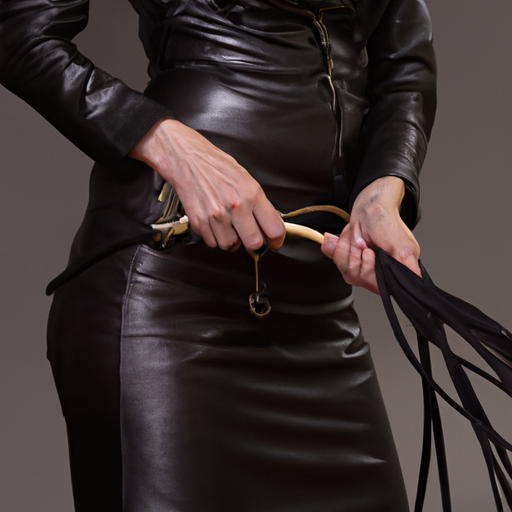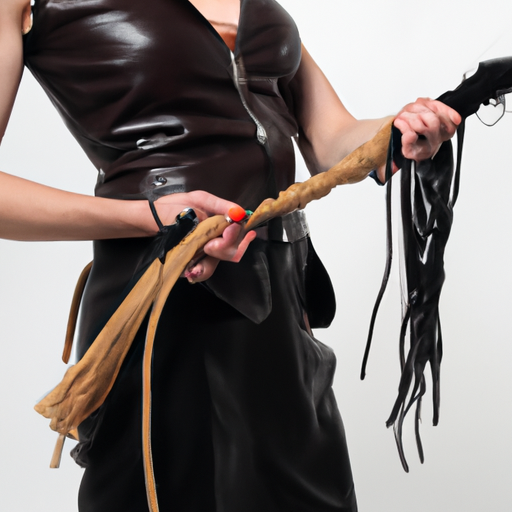How did latex become associated with bondage?
When it comes to the world of fetish and BDSM, latex has undeniably become an iconic material. The glossy, skin-tight allure of latex has captured the imagination of many, and it has become synonymous with bondage and fetish play. But how did this association come to be? In this blog post, we will delve into the history and evolution of latex’s connection with bondage, exploring the cultural and societal factors that have contributed to this fascinating phenomenon.
To understand the link between latex and bondage, we must first explore the origins of latex itself. Latex is a naturally occurring substance that is extracted from the sap of the rubber tree. It has been used for centuries in various applications, from waterproof coatings to adhesive properties. However, it was only in the mid-20th century that latex began to make its way into the world of fashion and fetish.
The emergence of latex as a material of choice for bondage can be attributed, in part, to the rise of fetish culture in the 20th century. As society became more sexually liberated and open-minded, individuals began to explore their desires and fantasies more openly. This newfound freedom led to the exploration of different materials and practices, with latex capturing the attention of many due to its unique properties.
Latex’s skin-like texture, combined with its tightness and glossiness, created a visual and tactile experience that was unlike any other. It provided a sense of confinement and restriction, which aligned perfectly with the principles of bondage. The allure of latex lies in its ability to create a sense of vulnerability and power exchange, where one person is in control while the other surrenders to their desires.
The association between latex and bondage was further solidified through popular culture. Films, magazines, and music videos began to feature characters and performers clad in latex, showcasing its seductive and provocative nature. This exposure helped to normalize latex as a material for fetish wear, contributing to its popularity within the BDSM community.
Additionally, the fetish fashion industry played a significant role in cementing latex as a symbol of bondage. Designers and manufacturers started creating specialized latex garments explicitly designed for BDSM play. These garments, such as latex catsuits, corsets, and hoods, accentuated the wearer’s body and enhanced the sensory experience, making them popular choices for bondage enthusiasts.
It’s important to acknowledge that the association between latex and bondage is not inherently negative or unethical. Bondage, when practiced consensually and with proper communication, can be a safe and fulfilling expression of one’s sexuality. The use of latex in this context is simply a personal preference and a way to enhance the experience.
In conclusion, the association between latex and bondage is a complex interplay of cultural, societal, and personal factors. Latex’s unique properties, combined with the rise of fetish culture and its portrayal in popular media, have contributed to its association with bondage and fetish play. It’s essential to recognize and respect individual preferences and explore these interests within the boundaries of consent and communication. Whether one chooses to indulge in latex or not, the key lies in embracing one’s desires and engaging in activities that bring joy and satisfaction, free from judgment or shame. Original Content.
What kind of equipment and tools can be found in a BDSM club?
In the realm of alternative lifestyles and sexual exploration, BDSM (Bondage, Discipline, Dominance, Submission, Sadism, and Masochism) has gained significant recognition over the years. bdsm clubs, also known as dungeons or play spaces, provide a safe and consensual environment for individuals to engage in their desires and fantasies. These clubs are equipped with a wide range of tools and equipment that cater to the diverse needs and preferences of its members.

Before delving into the specific equipment found in BDSM clubs, it is important to highlight the foundational principles that guide these spaces: consent, communication, and safety. Consent is the cornerstone of BDSM activities, and all participants must willingly and explicitly provide consent before engaging in any act. Open and honest communication ensures that boundaries, limits, and desires are clearly understood by all involved parties. Lastly, safety measures, such as safe words and the presence of experienced staff, are in place to ensure the physical and emotional well-being of everyone involved.
Now, let’s explore the various equipment and tools commonly found in BDSM clubs:
Bondage Equipment: Bondage is a central aspect of BDSM play, and clubs often have a wide array of bondage equipment. This includes ropes, handcuffs, chains, and leather restraints. These tools are used to restrict movement and create a sense of vulnerability and power exchange between the participants.
Impact Play Tools: Impact play involves striking or spanking the body to deliver pleasurable sensations or pain, depending on individual preferences. BDSM clubs may have a variety of impact play tools, such as floggers, paddles, canes, whips, and crops. These tools are made from different materials, including leather, rubber, or wood, and are designed to create a range of sensations.
Sensation Play Equipment: Sensation play focuses on stimulating the senses, often using tools like feathers, sensory deprivation masks, blindfolds, and pinwheels. These tools heighten sensitivity and can lead to intense pleasure or sensory overload, depending on the desired experience.
Medical and Role-Play Equipment: BDSM clubs often have a dedicated area for medical play or role-playing scenarios. This area may include medical examination tables, restraints, speculums, enema kits, and other medical instruments. It is important to note that all medical play is strictly consensual and performed with a focus on safety and hygiene.
Electro-Stimulation Devices: Electro-stimulation is a widely popular BDSM activity that involves using electrical current to stimulate various parts of the body. Clubs may have devices like violet wands, TENS units, or electro-stim toys that provide a range of sensations, from gentle tingling to intense electrical pulses.
Dungeon Furniture: BDSM clubs often have dedicated spaces called dungeons that are equipped with specialized furniture designed for various activities. These may include St. Andrew’s crosses, spanking benches, bondage cages, bondage beds, suspension frames, and bondage chairs. Dungeon furniture ensures comfort, safety, and accessibility during play.
It is important to remember that these tools and equipment are used within the context of consensual and negotiated activities. BDSM clubs prioritize the physical and emotional well-being of their members, and all activities are guided by the principles of trust, respect, and communication.
In conclusion, BDSM clubs provide a safe and consensual space for individuals to explore their desires and fantasies. The equipment and tools found in these clubs cater to a wide range of BDSM activities, including bondage, impact play, sensation play, medical play, electro-stimulation, and role-playing scenarios. However, it is crucial to emphasize that all activities within these clubs are based on consent, communication, and safety.
